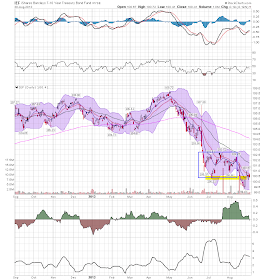- by New Deal democrat
Month over month July and August data was actually quite positive. Jobs were up, the unemployment rate was down, average hours worked and average hourly pay were up. Vehicle sales made a new nearly 6 year high and returned to their pre-recession normal range. Both the manufacturing and services ISM indexes were positive and improved. Construction spending for all sectors except public construction was up. Productivity was up. Unit labor costs were unchanged. Only factory orders were negative, as were the significant downward revisions to the June and July jobs reports, and the fact that a significant increase in people simply left the labor market.
Given the decidely mixed message of the August jobs report, let's start this edition of the high frequency weekly indicators by looking at our other measures of employment:
Employment metrics
Initial jobless claims
- 323,000 down -8,000
- 4 week average 328,500 down -2750
The American Staffing Association Index was steady at 97. It is up +4.5% YoY
Tax Withholding
- $154.6 B for the month of August vs. $145.5 B last year, up +9.1 B or +6.2%
- $146.2 B for the last 20 reporting days vs. $131.4 B last year, up +15.8 B or +11.3%
Initial claims remain firmly in a normal expansionary mode. Like each of the last three years that this same, a good, downside breakout has occurred.
Temporary staffing had been flat to negative YoY for a few months, but has now also broken out positively. Tax withholding, on the other hand, had a relatively poor August.
Steel production from the American Iron and Steel Institute
- -0.3% w/w
- -2.2% YoY
Steel production over the last several years has been, and appears to still be, in a decelerating uptrend. Obviously there is some noise in the weekly numbers. It has been negative YoY for the last 3 weeks, and year to date, is running -4.0% YoY.
Consumer spending
- ICSC -0.6% w/w +1.8% YoY
- Johnson Redbook +3.9% YoY
- Gallup daily consumer spending 14 day average at $91 up $23 YoY
Oil prices and usage
- Oil up +2.88 to $110.53 w/w
- Gas up +$0.06 at $3.61 w/w
- Usage 4 week average YoY down -0.3%
Interest rates and credit spreads
- 5.40% BAA corporate bonds down -0.15%
- 2.76% 10 year treasury bonds down -0.05%
- 2.64% credit spread between corporates and treasuries down -0.02%
Housing metrics
Mortgage applications from the Mortgage Bankers Association:
- -4% w/w purchase applications
- +6% YoY purchase applications
- +2% w/w refinance applications
Housing prices
- YoY this week +10.8%
Real estate loans, from the FRB H8 report:
- -3 or +0.1% w/w
- unchanged YoY
- +1.3% from its bottom
Money supply
M1
- +1.1% w/w
- -1.0% m/m
- +7.0% YoY Real M1
M2
- +0.3% w/w
- +0.2% m/m
- +4.6% YoY Real M2
Transport
Railroad transport from the AAR
- +8900 carloads up +3.1% YoY
- +8000 carloads or +4.9% ex-coal
- +10,500 or +4.2% intermodal units
- +19,500 or +3.6% YoY total loads
- Harpex down -1 to 405
- Baltic Dry Index up +220 to 1352
Bank lending rates
- 0.241 TED spread up =0.001% w/w
- 0.182 LIBOR unchanged w/w
JoC ECRI Commodity prices
- down -0.56 to 123.50 w/w
- +1.04 YoY
It helps to visualize the economy as moving like a snake or congested rush hour traffic. Different sections are stopped, or are moving forward, or are shifting directions, simultaneously, but all together create a coordinated movement. Similarly, in looking at the economy, the forward-most section is the long leading indicators, followed by the short leading indicators, followed by the coincident indicators, followed by the lagging indicators.
The long leading indicators look, frankly, like they want to roll over. Interest rates are negative, housing is turning negative, money supply is decelerating, and I suspect that despite their stellar Q2, corporate profits are decelerating as well.
Meanwhile the shorter leading indicators of initial jobless claims, vehicle sales, interest rate spreads, and the ISM manufacturing indexes all look positive, as does the ISM manufacturing index, although, contrarily, factory orders are negative. Temporary employment is up. The manufacturing workweek improved. Construction is positive. Stocks are neutral, however, and the choke collar of higher oil prices has engaged. Commodities as a whole have turned neutral.
The coincident indicators hit a soft patch, but some of these too look like they might break out positively. Rail traffic, which had been a real concern, has broken to the upside, as has shipping. Consumer spending is holding up well. Bank lending rates are at or near their lows. On the other hand, tax withholding is near its lows for the year. Steel production is negative.
Finally, the important lagging indicator of the unemployment rate is declining, but not for a good reason this month.
Putting the picture together, the economy may have nearly stalled in the last few months, but looks like it is ready to pick up steam again for the rest of the year, Washington willing. As we look further forward into 2014, much more caution is warranted.
Have a nice weekend.





























